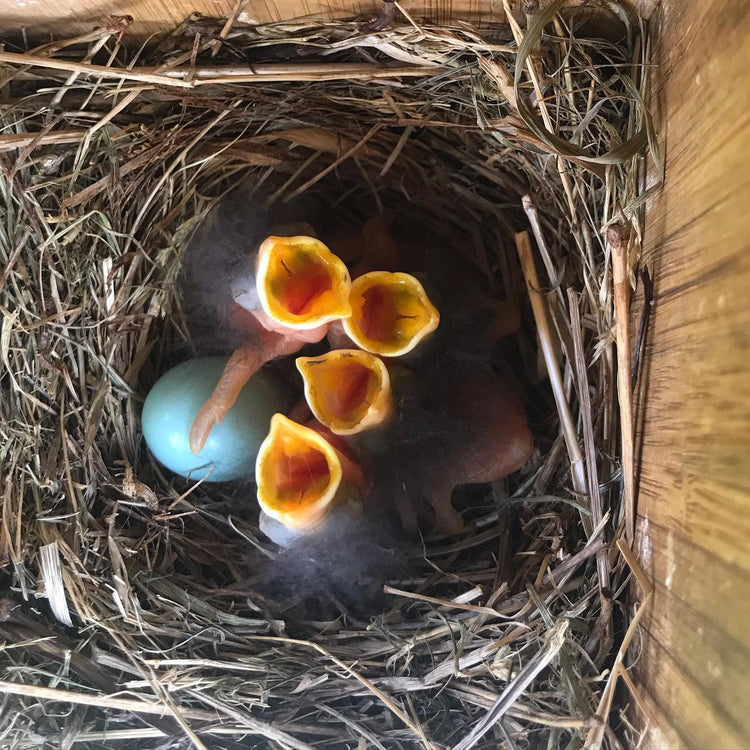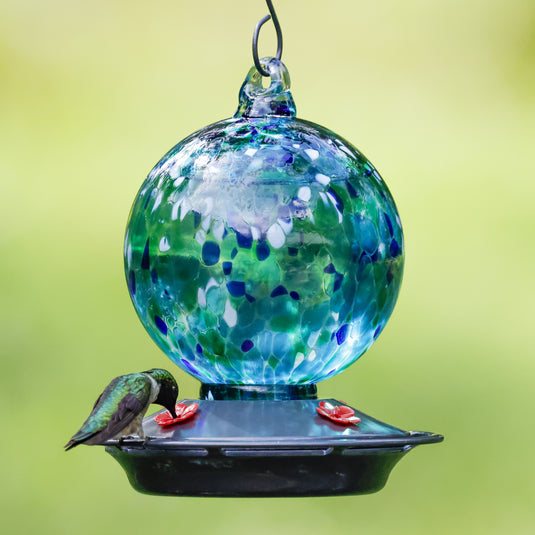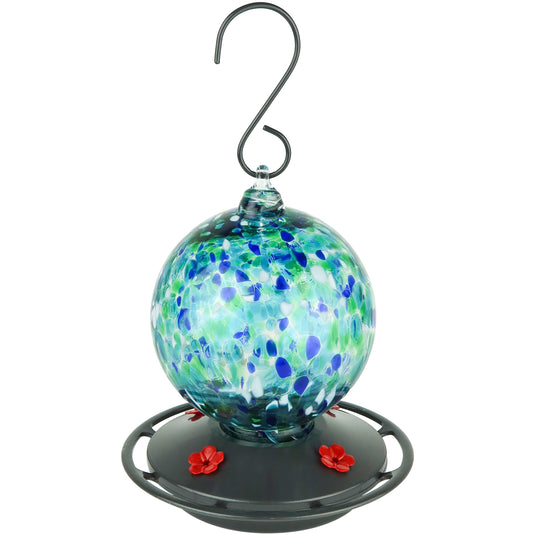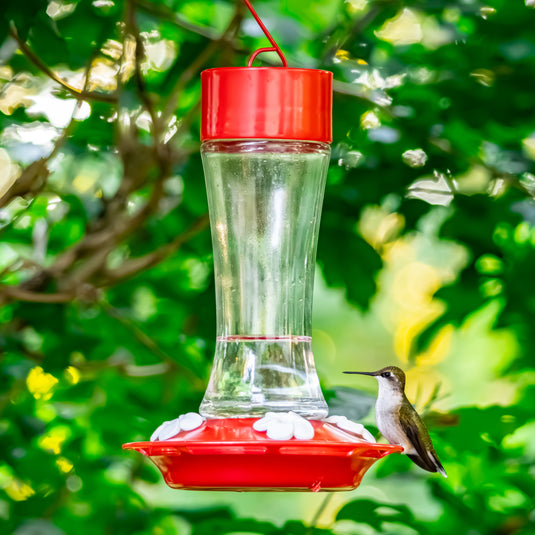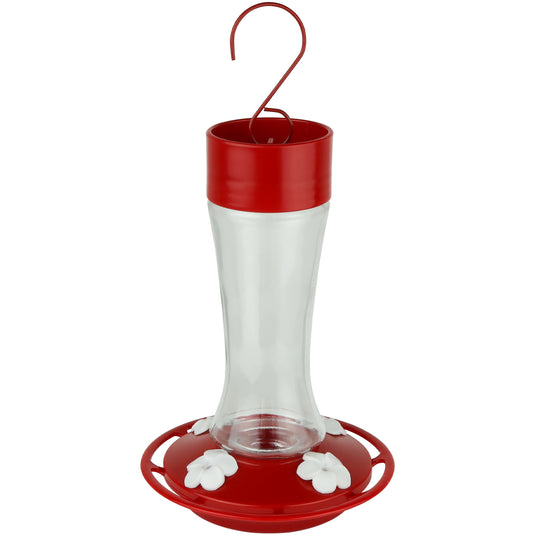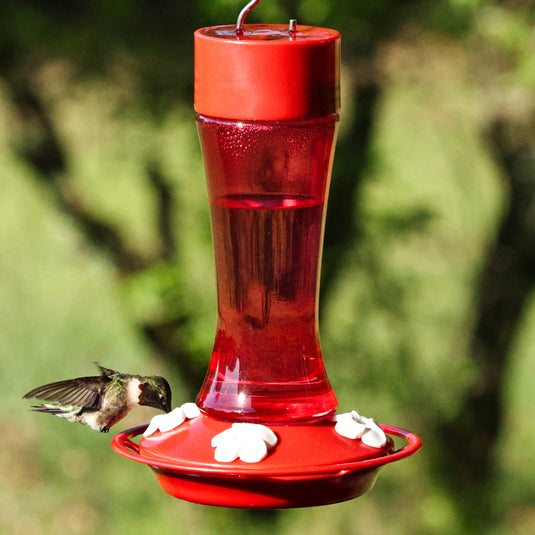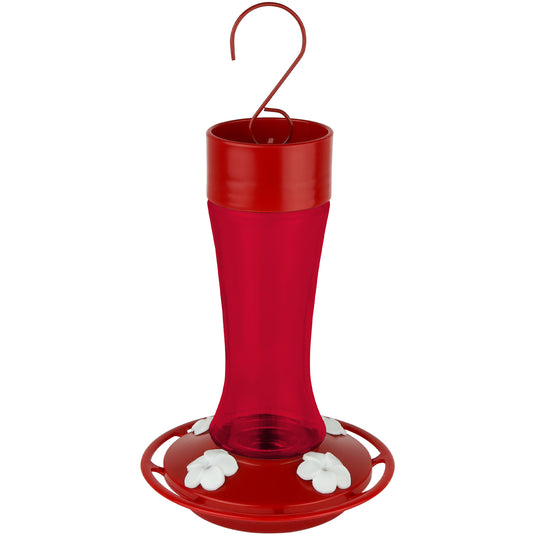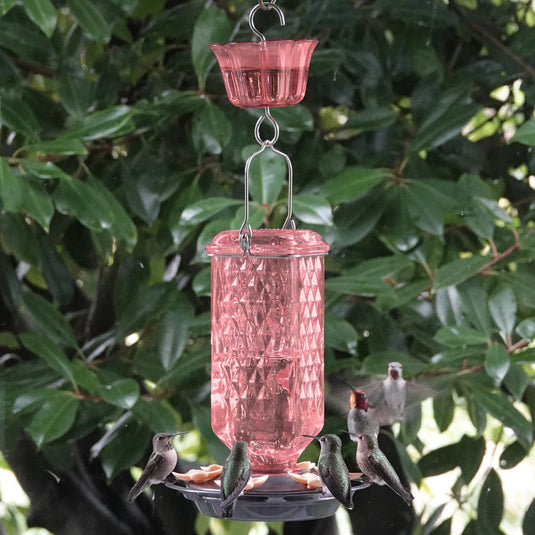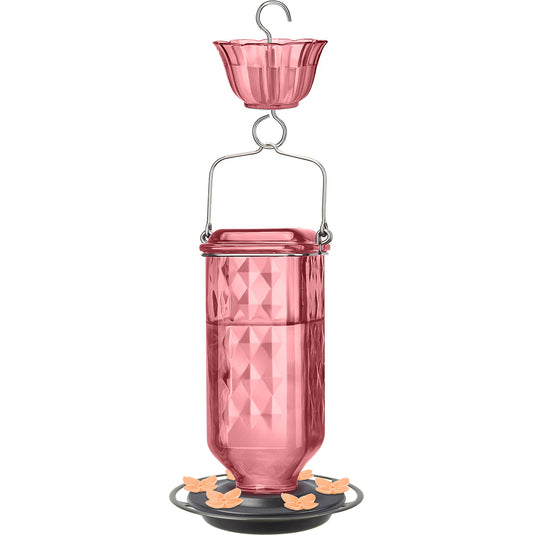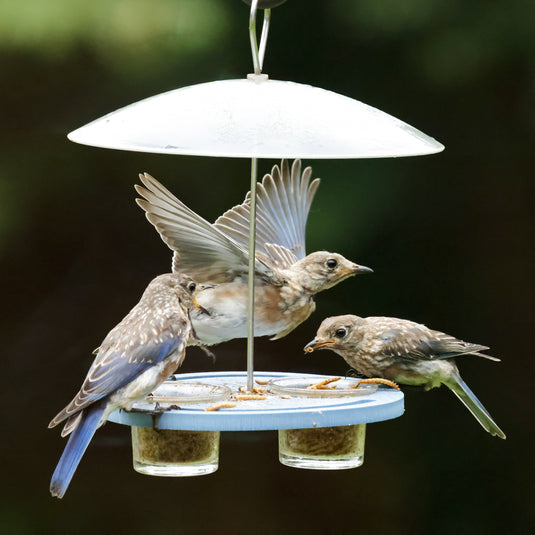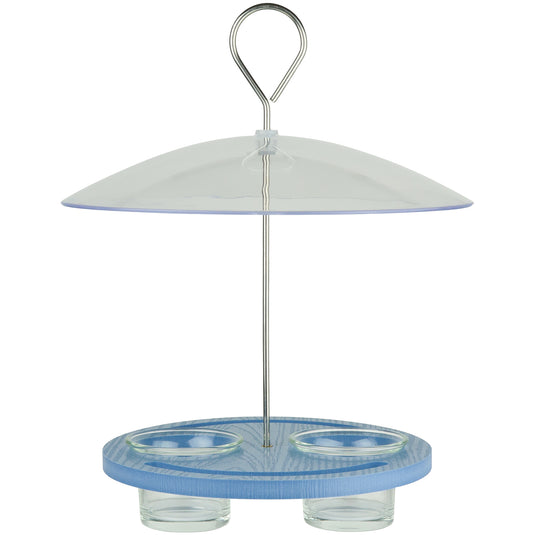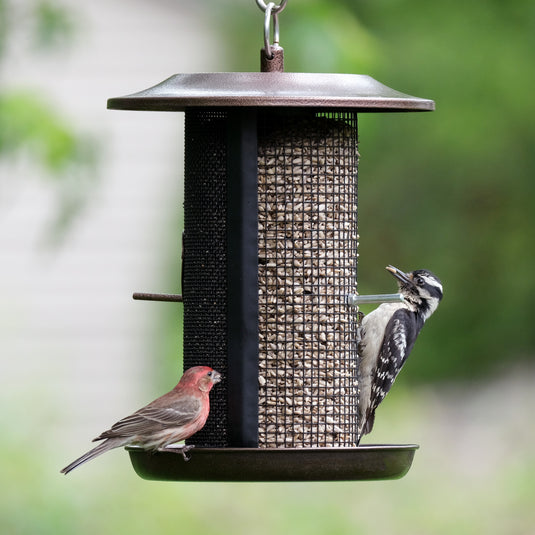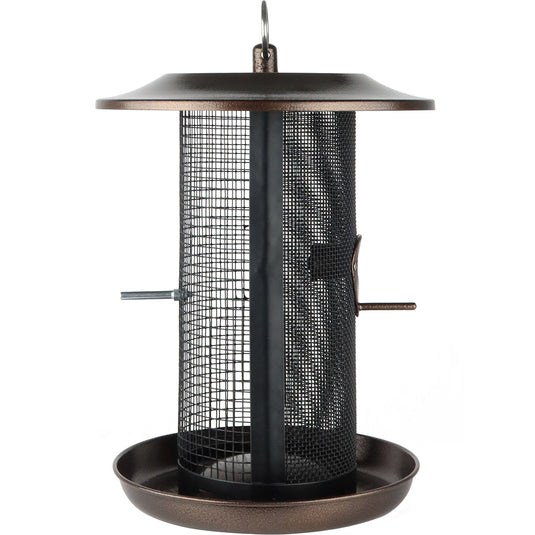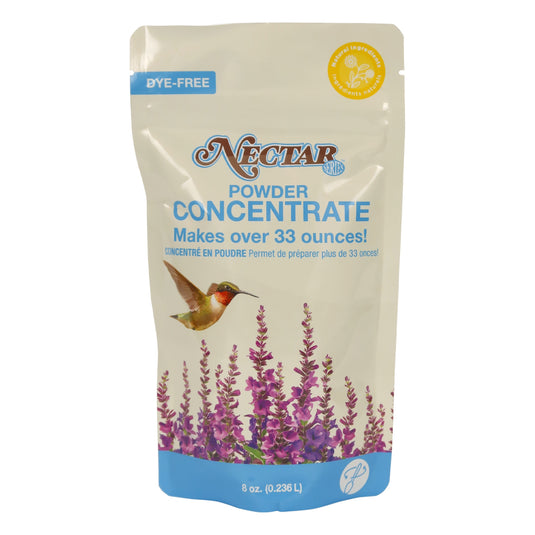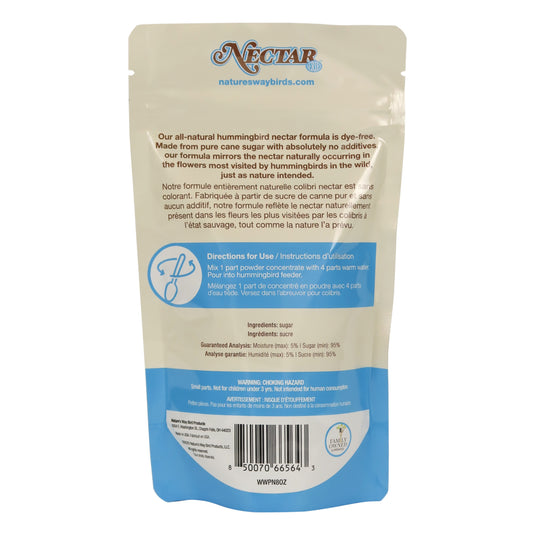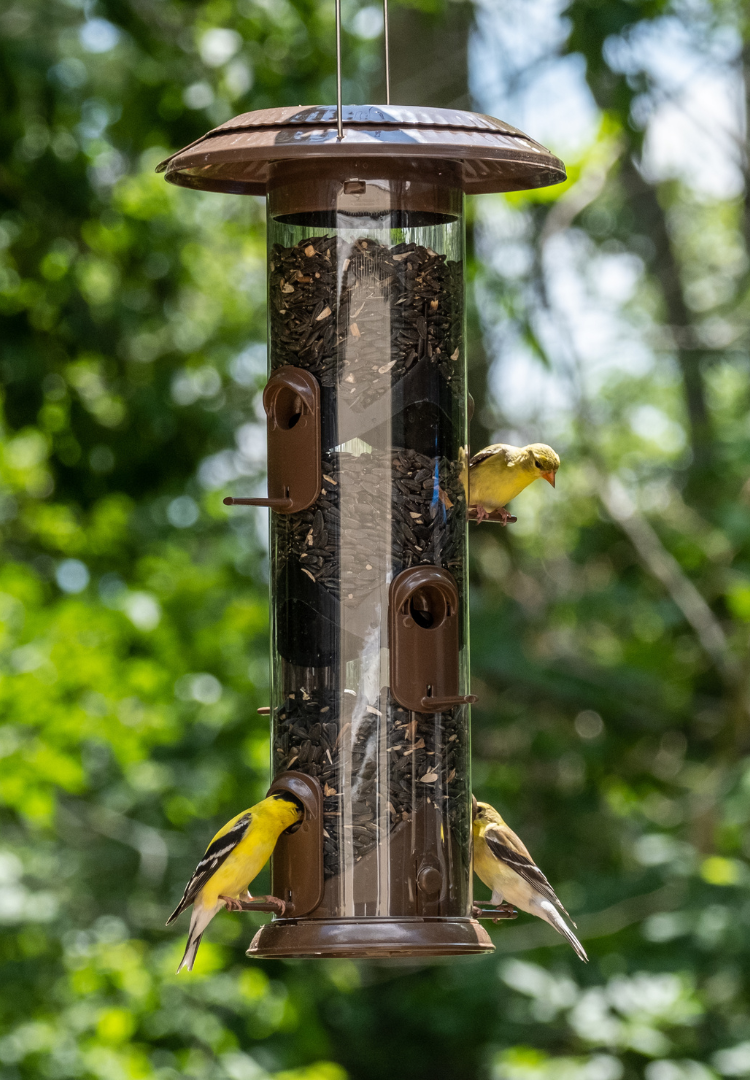Arguably the most exciting time for backyard birding begins in early spring, when migratory birds return from their winter recess and nesting season begins. What is nesting season? It’s the time of year when birds find a mate, build a nest, lay eggs, and raise their young. You, too, can experience the joys of nesting season in your own backyard by learning all about the spring nesting cycle!

Bluebird hatchlings in Bluebird Box House (Model# WWCH3).
When is bird nesting season?
Bird nesting season usually occurs from mid-March to mid-June and may fluctuate between geographic regions. Beginning in the spring, food sources are typically becoming more plentiful with the rise in temperature and increase in rainwater.
How do birds find a mate?
The first stage in the nesting cycle is courtship, or creating a pair bond between a male and female bird. You might be surprised to find that many of the ways birds attract a mate are similar in humans. Wild birds show off their talents by singing intricate songs and dancing with daring moves to prove their intelligence and maturity. Some choose to showcase their nurturing abilities, like nest-building and feeding, to demonstrate their ability to provide suitable shelter and foraging for their future young. Or simpler yet, they flaunt their finest features in displays that show off their bright plumage, health, and strength. This courtship generally lasts 1-2 weeks as the birds search for the perfect mate to nest with.
Where do birds make nests?
Depending on their species, the most common backyard birds will choose a variety of suitable nesting sites from tall grasses to birdhouses. Often building their nests at a fork in the branches of tall trees are hummingbirds, cardinals, and jays. Some birds, like juncos, make their nests in tall grasses, at the base of a tree or in exposed roots. Cardinals like to nest in dense shrubs or bushes, while finches will nest in a range of the previously mentioned locations. Woodpeckers prefer to nest in the cavities of live or dead trees but will not use nest boxes.
Bluebirds, tree swallows, titmice, wrens, chickadees, and nuthatches all prefer to nest in a cavity, whether it be a tree cavity or a birdhouse. If you’d like to try attracting a pair of nesting birds to your backyard, put up a Bluebird house or wren house ahead of the springtime and watch to see if your house becomes host to a growing family! Not sure where to put one? Check out our mounting and care instructions for Bluebird houses and wren houses.

A pair of Bluebirds using Bluebird Box House (Model# CWH3).
Bluebird Houses:
Wren Houses:
How long does it take for a bird to build a nest?
A bird’s nest can take anywhere from two days to two weeks to complete. There are many factors that can affect how long it takes for a bird to build a full nest. Material availability or quality, weather, and the bird’s experience level can all influence the number of days needed to construct a suitable nest.
Do birds reuse nests?
In most cases, birds do not reuse their old nests. Some birds, like woodpeckers and hummingbirds, may build on top of their old nests out of convenience or if it’s in their preferred location, but typically birds will move on to build a new nest in a new location as part of the nesting process.
If you have a birdhouse, it’s recommended that you clean it out after every brood has fledged. At minimum, once a year prior to nesting season. You can safely clean your birdhouse to reduce potential parasite problems and increase occupancy throughout the year.
How many eggs do birds lay in a season?
A clutch of eggs is the total number of eggs laid in one nesting attempt. A female bird doesn’t lay the same number of eggs in every clutch. The total number of eggs per clutch can vary widely depending on the species, or even the brood. Below is a list of the most common backyard birds, their potential number of broods, the size of each clutch, and a description of the egg to help you identify the nest.
|
Bird Species |
Number of Broods |
Typical Clutch Size |
Egg Description |
Nest Description |
|
Northern Cardinal |
1-2 broods |
2-5 eggs |
Grayish white, buffy white, or greenish white speckled with pale gray to brown. |
Open cup made of twigs, weeds, grass, bark strips, leaves, rootlets, lined with fine grass or hair. |
|
1 brood |
2-7 eggs |
Bluish or light brown with brownish spots. |
Bulky open cup made of twigs, grass, weeds, bark strips, moss, sometimes held together with mud. Lined with rootlets and other fine materials, often decorated with paper, rags, string, or other debris. |
|
|
1 brood |
1-13 eggs |
White with fine reddish-brown dots or spots. |
Foundation of moss or other matter, lining of softer material such as animal hair. |
|
|
1-2 broods |
2-7 eggs |
Pale bluish white, sometimes with small faint brown spots around large end. |
Solid, compact cup of plant fibers, spiderwebs, plant down (especially from thistles); nest is so well-made that it may even hold water. |
|
|
1-6 broods |
2-6 eggs |
Pale blue to white, speckled with fine black and pale purple. |
Open cup of grass, weeds, fine twigs, leaves, rootlets, sometimes with feathers, string, or other debris added. |
|
|
1-3 broods |
2-7 eggs |
Pale blue or, rarely, white. |
Loosely constructed cup of weeds, twigs, and dry grass, lined with finer grass, sometimes with animal hair or feathers. |
|
|
Tree Swallow |
1-2 broods |
4-7 eggs |
Pale pink, turning to pure white within 4 days. |
Cup of grass, weeds, rootlets, moss, pine needles, other plant materials. Usually lined with many feathers (from other kinds of birds), mostly added after first eggs are laid. |
|
1 brood |
5-9 eggs |
Creamy white to pinkish-white, speckled with reddish brown, gray, or purple. |
Simple cup of bark fibers, grasses, twigs, hair. Sometimes adds mud to rim of nest entrance. |
|
|
House Wren |
1-2 broods |
3-10 eggs |
White, pink-white, or grayish, speckled or blotched with reddish brown. |
Foundation of twigs, topped with softer cup of plant fibers, grass, weeds, animal hair, feathers. |
|
American Robin |
1-3 broods |
3-5 eggs |
Sky blue or blue-green and unmarked. |
Cup of grasses, twigs, debris, worked into solid foundation of mud, lined with fine grasses and plant fibers. |
|
1 brood |
3-9 eggs |
White to creamy white, spotted with chestnut-red, brown, purple, or lilac. |
Foundation of grass, moss, leaves, bark strips, lined with soft materials, especially animal hair. |
|
|
1-2 broods |
1-3 eggs |
Tiny, white, weighing about half a gram. |
Compact cup of grasses, plant fibers, spider webs, lined with plant down. The outside is camouflaged with lichens and dead leaves. |
|
|
1 brood |
3-8 eggs |
Completely white. |
Cavity entrance is often surrounded by fungus or lichen, helping to camouflage site. |

A clutch of five Tree Swallow eggs inside the Bluebird Box House w/Viewing Window (Model# CWH4).
How long does it take for a baby bird to mature? How does a baby bird learn to fly?
From the birth of the hatchling (a newly hatched bird that can’t walk or fly with few or no feathers and closed eyes) until the time they are a fledgling learning to fly varies between bird species but is generally between 10 days and 3 weeks. For fledglings, learning to fly takes a little bit of practice and lot of instinct. Fledglings usually begin attempting to fly when they are around 2 weeks old, after a period of stumbling and falling around the nest. Practicing flight usually involves flying or falling from the nest and finding their way back to it. After a few attempts, they’ll learn how to spread their wings and begin flapping to avoid falling to the ground.
What do you do if you find a baby bird on the ground?
If you find a baby bird on the ground, first identify whether the bird is a hatchling (a newly hatched bird that can’t walk or fly with few or no feathers and closed eyes) or a fledgling (mostly covered in feathers of a dull color with stubby wings and tail). A fledgling who is learning how to fly can make its way back to the nest without any help. If the bird is a hatchling, don’t be afraid to place the bird back in the nest if you can locate it. Birds don’t have a strong sense of smell and they will not abandon their young if you touch them.
If the bird is injured, do not touch it. Contact your city or county extension office to reach your local wildlife management department. Or, if you have a local park district, there may be a rehabilitation center who will accept injured birds or wildlife.
Which birds are you hoping will nest in your backyard this season? Share your nesting season stories with us!

